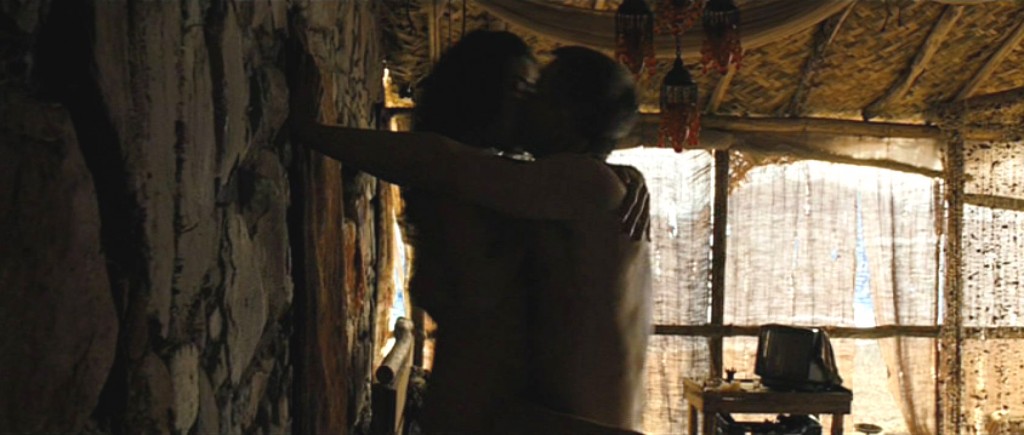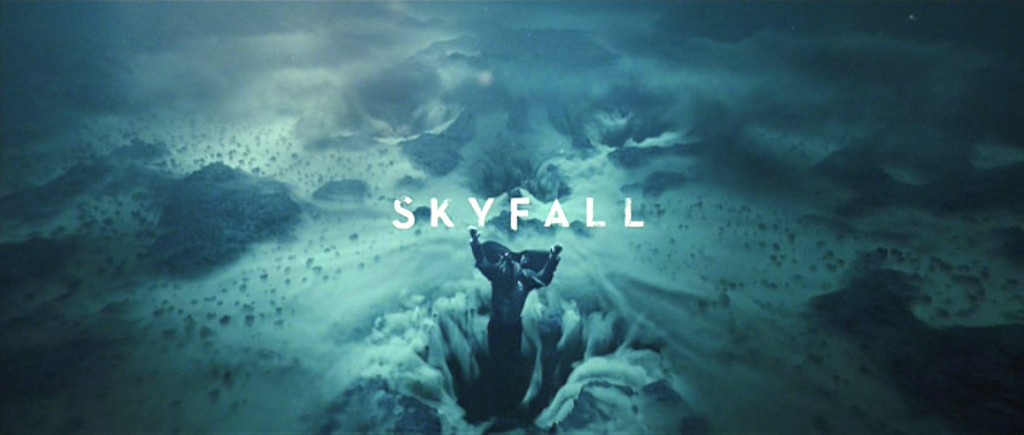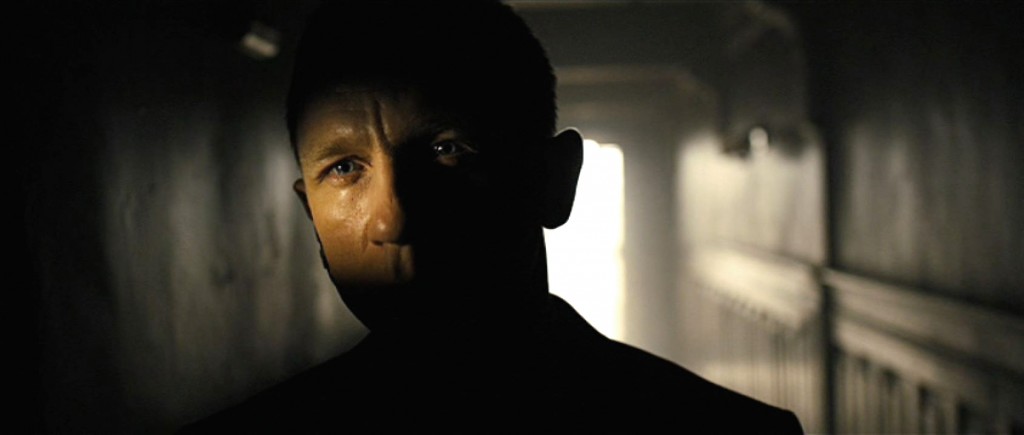James Bond: Skyfall part 3
What does James Bond want? As I’ve discussed before, James Bond’s “natural state” is one of arrested adolescence. He wants only to bed beautiful women, drink himself to stupefaction, and, if time allows, gamble. Everything that happens in his movies, all the cat-stroking psychopaths and space-based lasers, are all things that prevent him from getting back to doing what he wants. At the end of the typical Bond movie, he ends up in a boat or a space capsule or a submarine with a beautiful woman and a bottle of champagne, his debt to the world discharged. Allow me to repeat: if it were not his job to save the world, James Bond would never ever do it. It is not his concern. Which is why he often seems so bored on his adventures. In his very first movie he even sighs and says “The same old dream, world domination,” as though there is nothing more routine than single-handedly altering global history.
In Skyfall he is no different. Surviving being shot (twice) and plunging off a very tall bridge into a river, and then going over a waterfall, Bond has apparently washed ashore somewhere beachy and is making a living from betting on scorpion-themed drinking games. He’s got a shack, a lady friend, access to booze (and prescription drugs, apparently for his still-healing wounds) and gambling (scorpion drinking isn’t not Chemin de Fer, but what is?), he has, after a turbulent pre-title sequence involving his own death, established equilibrium. For all this, he’s not happy — something, he can tell, is calling him.
Into this paradise, life intrudes, as he is informed of the attack on M’s life. Bond will never marry (Lazenby excepted), and he will never be a father, but he is, for what it’s worth, a good son, and he hies himself, like Bruce Wayne out of The Pit, back to rainy old London to report for duty.
James Bond: Skyfall part 2
Skyfall is easily the most elegantly directed Bond movie. Bond movies date back to the early ’60s, the tail end of the “big producer” era, and EON Productions, which has produced Bond from the beginning, retains its hold on the stylistic choices made. No actor, no director is a bigger “star” than James Bond. It’s rare to see any kind of point of view from behind the camera. Bond movies are generally directed by skilled journeymen, directors who can organize a complicated set, deal well with actors, juggle egos, make their days and not go over budget. I remember watching Die Another Day with James Urbaniak, and him mentioning that he couldn’t remember seeing a less-intentional directorial style, and I feel like Die Another Day is actually one of the more stylish of Bond movies. Skyfall‘s direction is not merely skillful and elegant, but has a specific point of view. Spielberg, Scorsese and Tarantino have all mentioned wanting to make a Bond movie, and while I think the ship has sailed for those guys, I wonder if perhaps we’re approaching the point where a genuine stylist might be invited to put their stamp on the biggest franchise in history.
(Skyfall benefits not only from Sam Mendes’s direction, but also from the Coenesque team of Roger Deakins as DP and Dennis Gassner as production designer, surely the greatest artists working in those jobs today. Indeed, apart from Ken Adam, I can’t identify more talented people to have ever worked on a Bond movie.)
The “Bond title sequence” has been a feature of that franchise from the very beginning. Maurice Binder, who constructed all the titles from Dr. No to License to Kill, has to be counted as one of the most influential artists of the 20th century. Here we are, fifty years later, still trying to top him at the game he invented. Skyfall‘s titles acquit themselves very well — lush, evocative, thematically dense, telling the story of the movie in dream symbols. One of my readers suggested yesterday that Skyfall is perhaps all in Bond’s mind as he plunges to the bottom of the river in Turkey, and the titles certainly suggest it. The swirling hole that swallows Bond up at the top of the sequence suggests the rifled gun barrel that has been Bond’s logo from the beginning, suggesting that Bond isn’t merely drowning in a river, but drowning in his past. “The past” has haunted James Bond at least since Diamonds Are Forever, and Bond movies have been referring to themselves since From Russia With Love. Bond has been trotting around the world for fifty years now, aging, then becoming young again, then aging again, sometimes keeping in touch with past selves, sometimes throwing those past selves. To me, it’s weird enough that Daniel Craig shares an M with Pierce Brosnan, since Craig is a definite reboot, but the repeating M only scratches the surface of the weird temporality that Bond inhabits.
But we’re here to talk about the screenplay.
James Bond: Skyfall part 1
Often, a cinematic narrative resolves into a family dynamic. Soldiers become brothers, teachers become parents, animals become children. Family dynamics are useful to get at what makes stories universal. Not many people know what it’s like to hunt a shark, but everyone knows what it’s like to be stuck in house with squabbling siblings. That’s often our “way in” to the narrative. Few movies, let alone few spy movies, go ahead and make the family dynamic the foreground of the narrative, but Skyfall does, and by so doing it does something to James Bond that has never really been done before: make him a character. Or, as my 11-year-old son puts it, it makes him interesting.
Longtime readers of this journal will know that a few years ago I did a sketchbook analysis of all the James Bond movies. When I started, I was largely unfamiliar with the character — I’d missed every Bond movie from Moonraker to Goldeneye and had only seen Goldfinger before that. Bond as a character was ever elusive to me, he never seemed like a person, more of a list of attributes: tuxedo, car, gun, gambling, martini, babes. He seemed closer to a model than a person. We knew how he would behave but we didn’t know who he was, and, since we knew he’d survive every adventure, we knew there was never really anything at stake for him. He murdered people, gave a quip and a cockeyed smile, and moved on. How appropriate that Skyfall begins with a shot of Bond literally coming into focus. After fifty years it’s a long time coming.
Skyfall has four acts. Act I involves Bond’s “death” and “resurrection,” his training, assignment and departure into the world. Act II involves the steps required to fulfill his mission and is divided into three sections recognizable by locale: Shanghai, Macau and Bad Guy Island. At the end of Act II, Bond has captured the Bad Guy and brought him back to London. Act III takes place entirely in London and involves the Bad Guy escaping and the flourishing of the family dynamic, and Act IV literally takes Bond home, to Scotland and a last reckoning.


